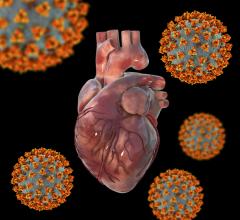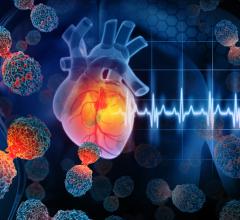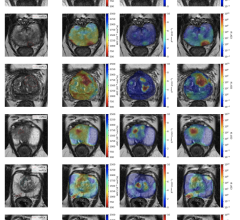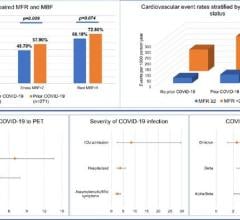
Getty Images
The global cardiovascular ultrasound systems market was expected to register a CAGR of 5.9% over the forecast period, according to The Cardiovascular Ultrasound System Market—Growth, Trends, COVID-19 Impact and Forecast (2022-2027), a new report from Mordor Intelligence.
COVID-19 had a profound impact on the cardiovascular imaging system in 2020. The largest factor to negatively impact the market was the reduction in the diagnosis of cardiovascular diseases due to healthcare resources being reserved for COVID-19 patients. However, patients with underlying heart disease are at higher risk of severe illness for COVID-19. In such patients, diagnostic ultrasound can and is being used to diagnose COVID-19. Ultrasound of the heart, which can be performed at the bedside, has become a key tool for clinicians while treating and monitoring COVID-19 patients. The risk of contamination and nosocomial spreading associated with the usage of the standard diagnostic tools such as stethoscope and radiology imaging systems in the management of COVID -19 contributed to the rising demand for pocket-sized cardiovascular ultrasound systems changing the dynamics of these market spaces.
The major factors for the growth of the cardiovascular ultrasound system market include the increasing incidence of cardiovascular diseases (CVD), rise in technological advancements, and advantages of echocardiography over invasive cardiac diagnostic procedures.
CVDs remain a substantial cause of morbidity and mortality in the developed world, and are becoming an increasingly important cause of death in developing countries. According to the 2020 updates of the World Health Organization, ischemic heart disease is responsible for 16% of the world’s total deaths. Since 2000, the largest increase in deaths has been for ischemic heart disease, rising by more than 2 million to 8.9 million deaths in 2019. Consequently, the increase in the number of cardiovascular diseases has increased the demand for the cardiovascular ultrasound system for diagnosis.
Technological advancement such as artificial intelligence (AI) has had a significant positive impact on cardiology, offering improved capabilities to diagnose certain heart conditions. However, factors such as unfavorable reimbursement scenarios and the economic impact of adopting new technologies are likely to impede the studied market growth over the forecast period.
Key Market Trends
The 2-D ultrasound imaging segment is expected to be fastest growing segment over the forecast period. COVID-19 impacted the production of 2-D cardiovascular ultrasound systems in 2020. Furthermore, the delay of elective procedures due to COVID-19-related measures adversely affected the cardiovascular medical devices market. While some cardiovascular procedures are considered urgent, others have been postponed and delayed since the beginning of the global pandemic. Another factor negatively impacting the market is the reduction in the diagnosis of cardiovascular diseases due to healthcare resources being reserved for COVID-19 patients.
Two-dimensional ultrasound imaging is also known as B-mode echography or sonography. It displays a 2D- map of B-mode data and is currently the most common form of cardiac ultrasound imaging used worldwide. It uses multiple transducers, and enables the generation of multiple images of the field or frames every second on the screen, giving an illusion of movement. It is primarily used to measure cardiac chamber dimensions, assess valvular structure and function, and improve the accuracy of interpretation of Doppler modalities.
Two-dimensional ultrasound is one of the most common forms of technology used. However, it has disadvantages, such as low resolution, distortion of ultrasound wave resulting in inaccurate images, view of the internal bone structure and regional placement. Technological advancements, like Doppler imaging and 3-D/4-D ultrasound imaging, are expected to affect the global 2-D imaging market during the forecast period.
North America is Expected to Dominate the Market
North America is anticipated to lead the market due to the high adoption of ultrasound modality in general diagnostics and the rising prevalence of lifestyle-associated chronic diseases. The high demand for technologically advanced medical devices is expected to propel market growth in the region.
According to the American Heart Association Research Report 2018, heart disease accounts for 1 in 7 deaths in the United States. Coronary heart disease is the leading cause (43.8%) of deaths attributable to cardiovascular disease in the United States, followed by stroke (16.8%), heart failure (9%), high blood pressure (9.4%), diseases of the arteries (3.1%) and other cardiovascular diseases (17.9%). This scenario leads to a higher demand for cardiovascular ultrasound systems for better diagnosis, which will drive the market in the United States.


 March 20, 2024
March 20, 2024 









